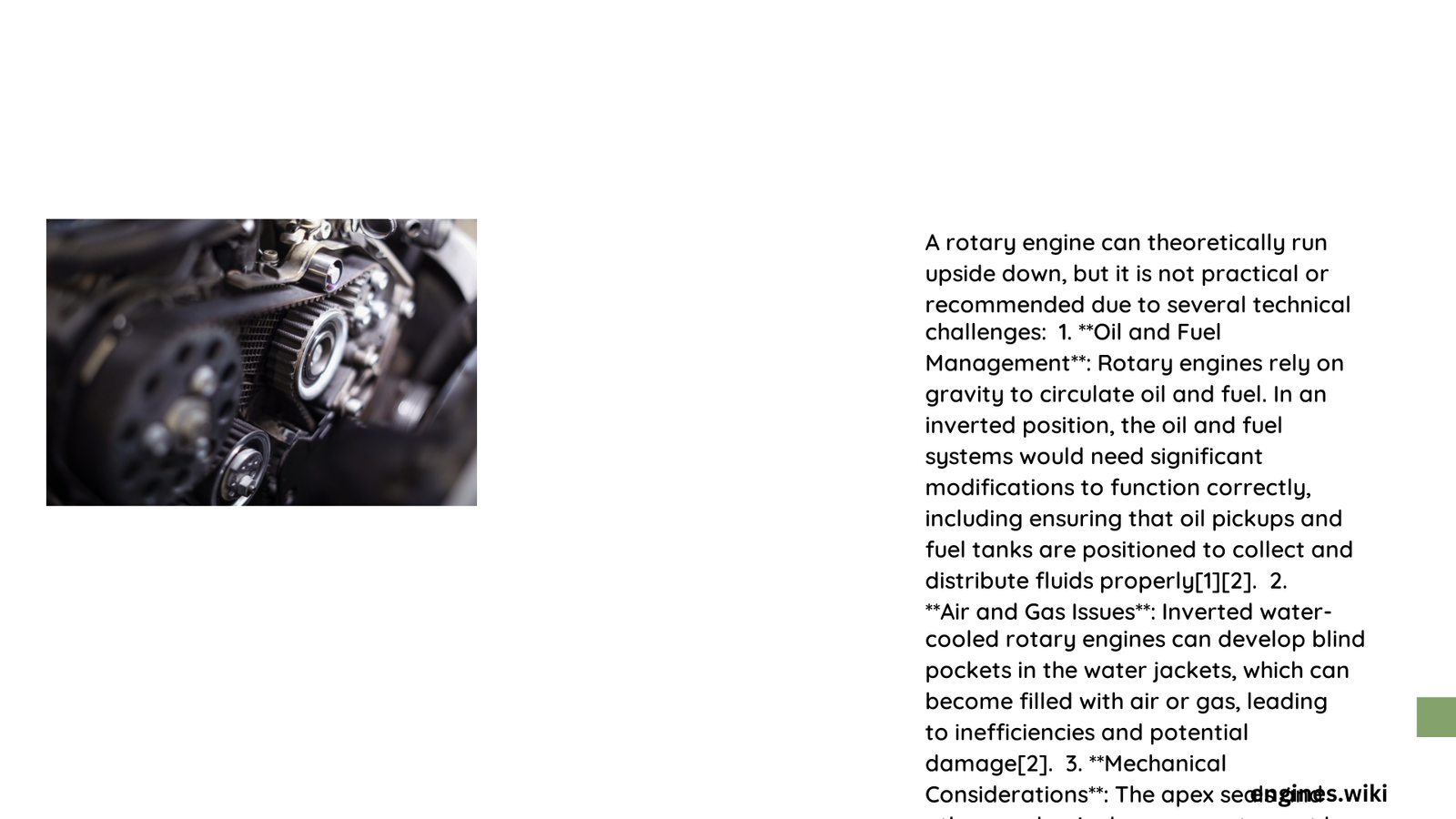Rotary engines have long fascinated engineers and automotive enthusiasts with their unique design and potential for innovative performance. The question of whether a rotary engine can run upside down reveals a complex interplay of mechanical engineering principles, lubrication systems, and advanced design techniques. Modern rotary engine innovations, particularly the X-engine developed by LiquidPiston, demonstrate that engine orientation is no longer a significant limitation for rotational power plants.
Can Traditional Rotary Engines Operate When Inverted?
Traditional Wankel rotary engines face significant challenges when operating in an inverted position. The primary concerns include:
- Lubrication Challenges:
- Oil distribution becomes problematic
- Seal integrity is compromised
- Potential engine damage due to inadequate lubrication
How Modern Rotary Engines Solve Orientation Limitations?
The X-engine represents a breakthrough in rotary engine design, addressing traditional orientation constraints through innovative engineering:
| Design Feature | Traditional Wankel | X-Engine |
|---|---|---|
| Seal Location | Rotor-mounted | Housing-mounted |
| Lubrication Complexity | High | Significantly Reduced |
| Orientation Flexibility | Limited | Highly Adaptable |
What Makes Inverted Rotary Engine Operation Possible?

Several key factors enable modern rotary engines to operate effectively in various orientations:
- Seal Design Improvements
- Stationary housing-mounted seals
- Reduced mechanical stress
-
Enhanced lubrication reliability
-
Advanced Lubrication Systems
- Gravity-independent oil distribution
- Improved seal material technologies
- Optimized oil flow mechanisms
Technical Considerations for Upside-Down Operation
Engineers must address several critical aspects when designing an inverted rotary engine:
- Fuel Delivery Mechanisms
- Gravity-independent fuel injection systems
- Precise fuel metering regardless of orientation
-
Consistent combustion chamber performance
-
Thermal Management
- Even heat distribution
- Reduced thermal stress
- Consistent cooling efficiency
Performance Metrics of Inverted Rotary Engines
The X-engine demonstrates remarkable performance characteristics:
- Power Density: 4 horsepower per 4.5 pounds
- Efficiency Improvement: 30% over conventional diesel engines
- Compression Ratio: Up to 26:1
Practical Applications and Limitations
While modern rotary engines can operate in various orientations, practical considerations remain:
- Aerospace applications
- Specialized industrial equipment
- Compact power generation systems
Key Takeaways for Rotary Engine Orientation
- Modern design overcomes traditional limitations
- Seal and lubrication technologies are critical
- Orientation is no longer a significant performance barrier
Rotary engine technology continues to evolve, pushing the boundaries of traditional mechanical design and demonstrating remarkable adaptability in power generation.
Technical Insights
The ability of a rotary engine to run upside down depends on:
– Advanced seal design
– Sophisticated lubrication systems
– Innovative mechanical engineering approaches
References:
– LiquidPiston X-Engine Technology
– Rotary Engine Design Innovations
– Advanced Rotary Engine Research
